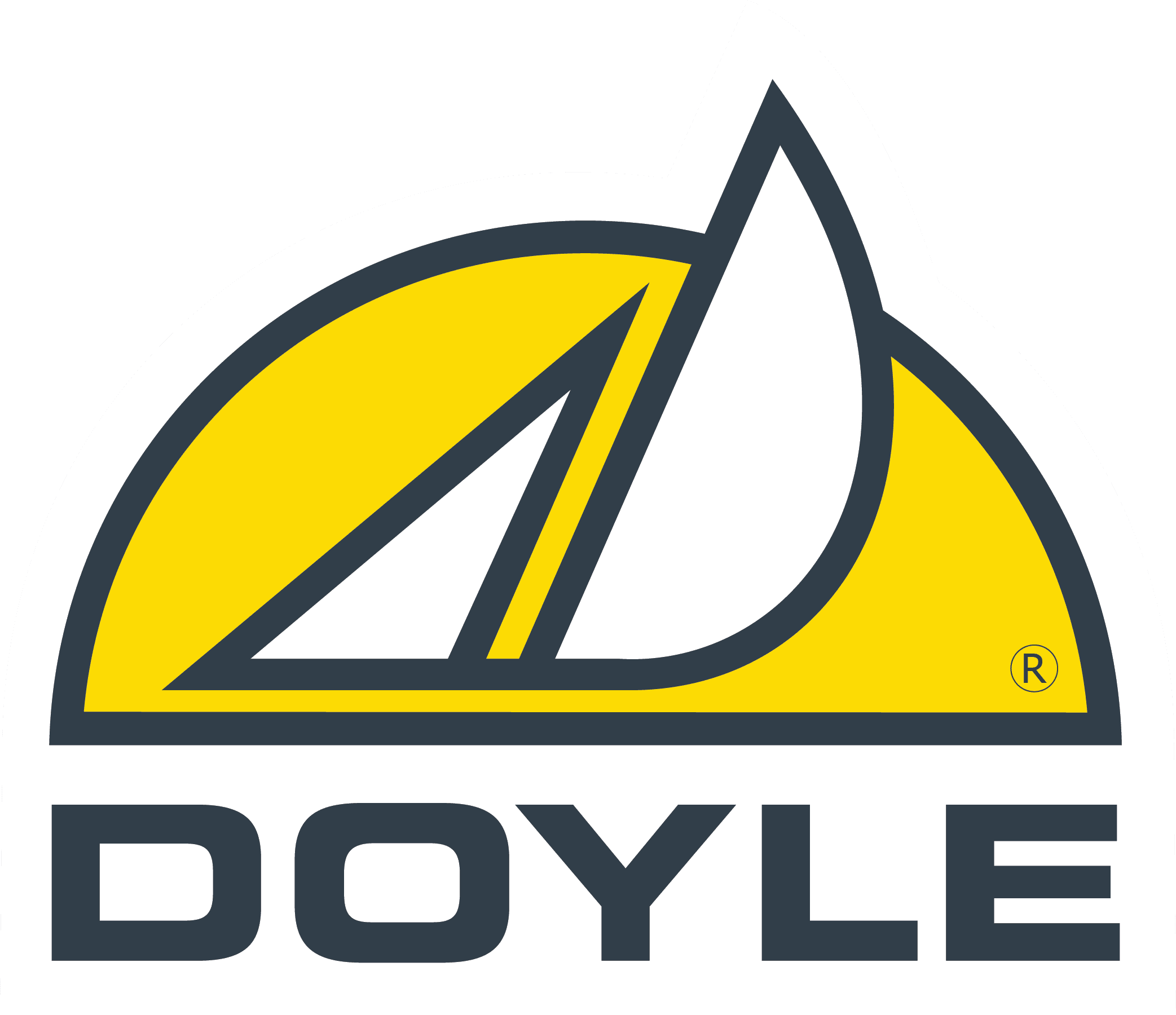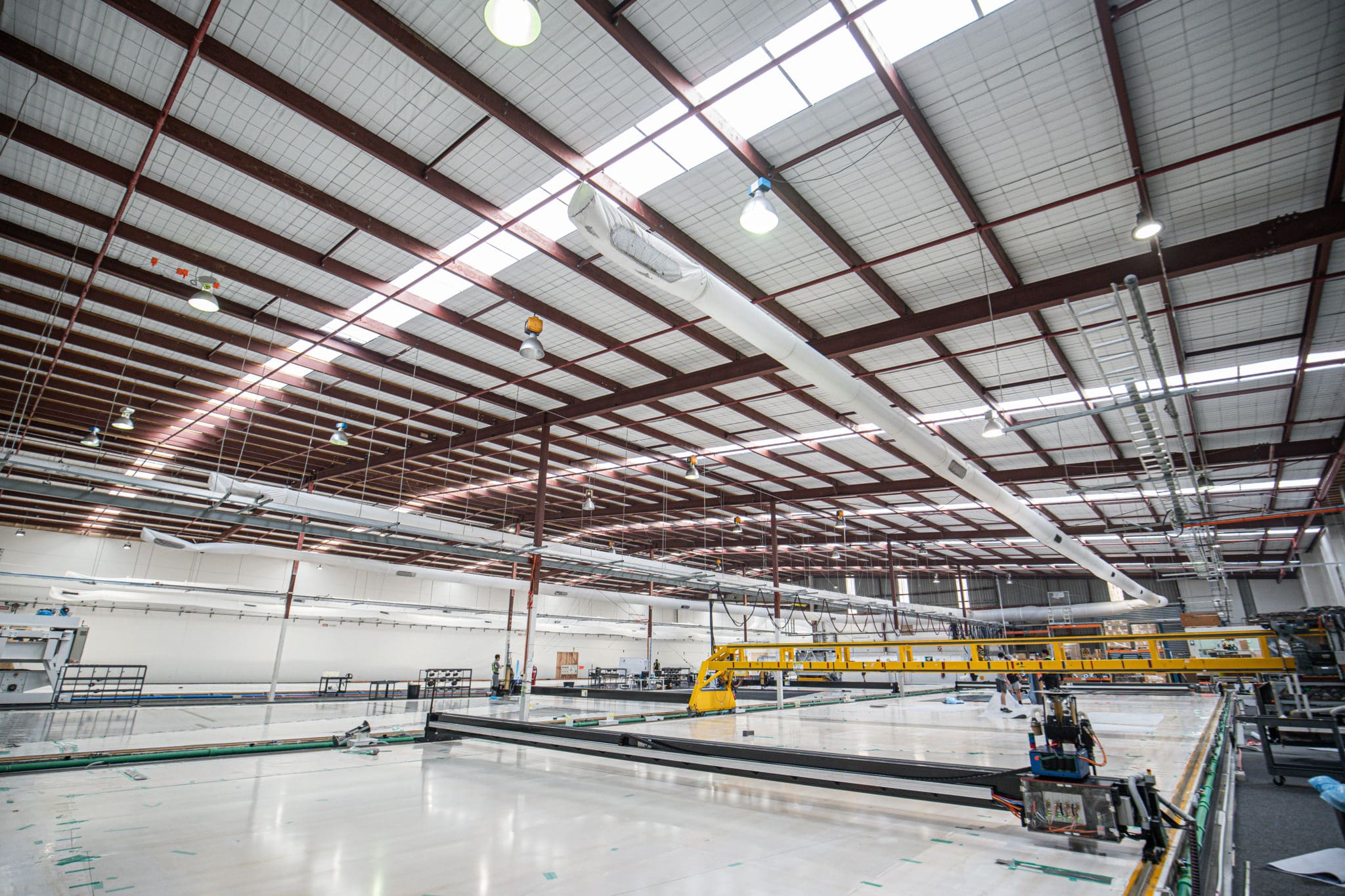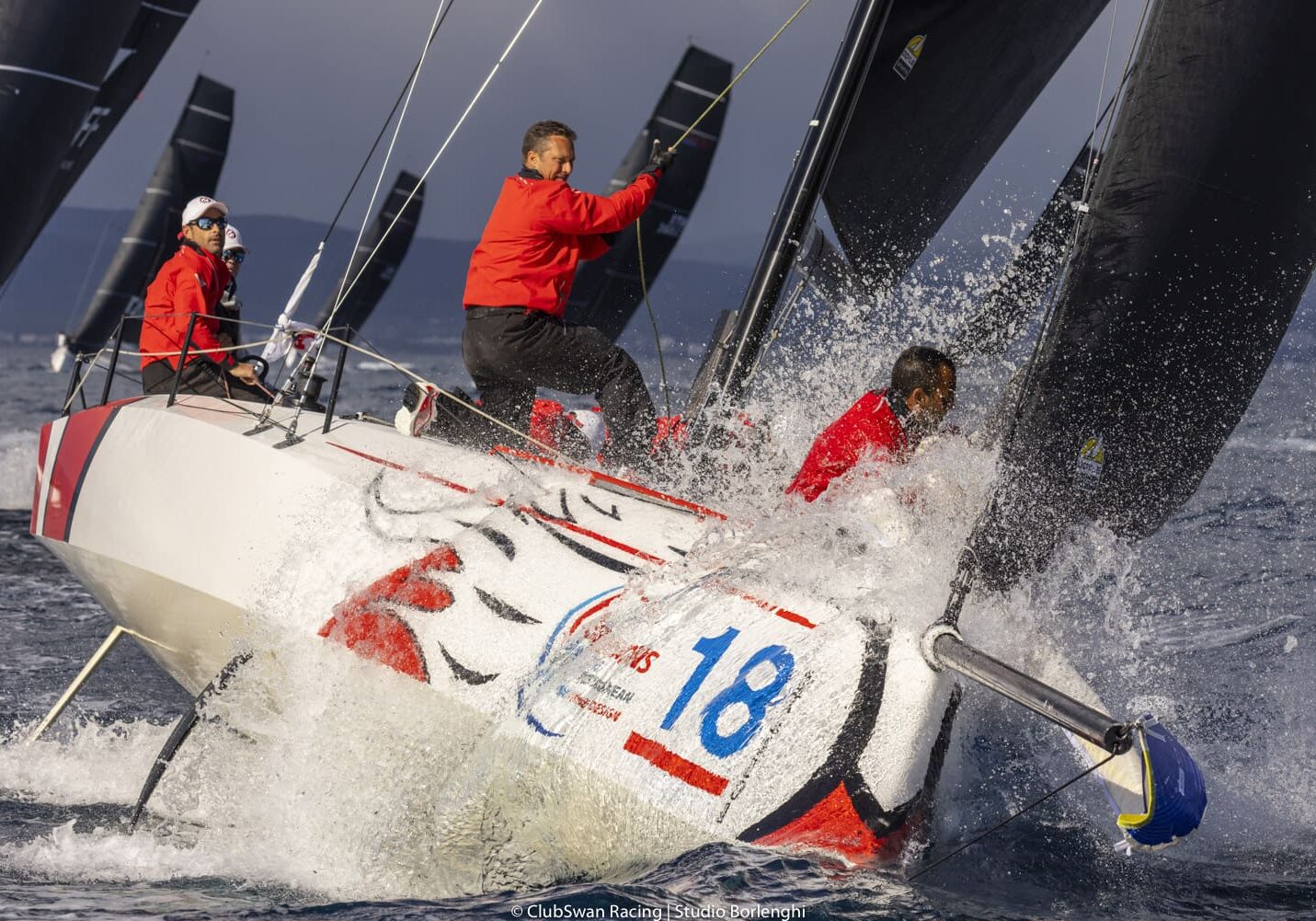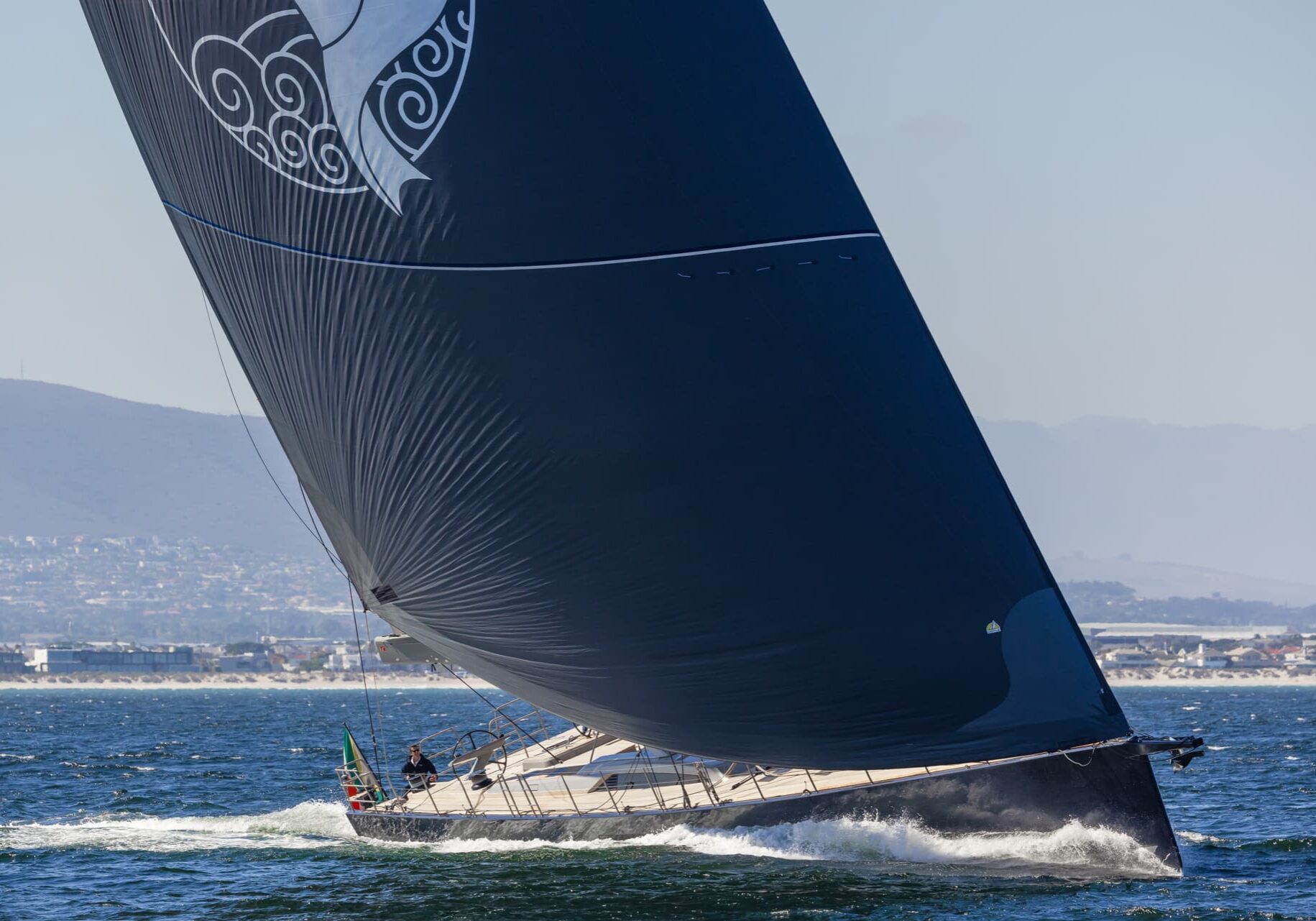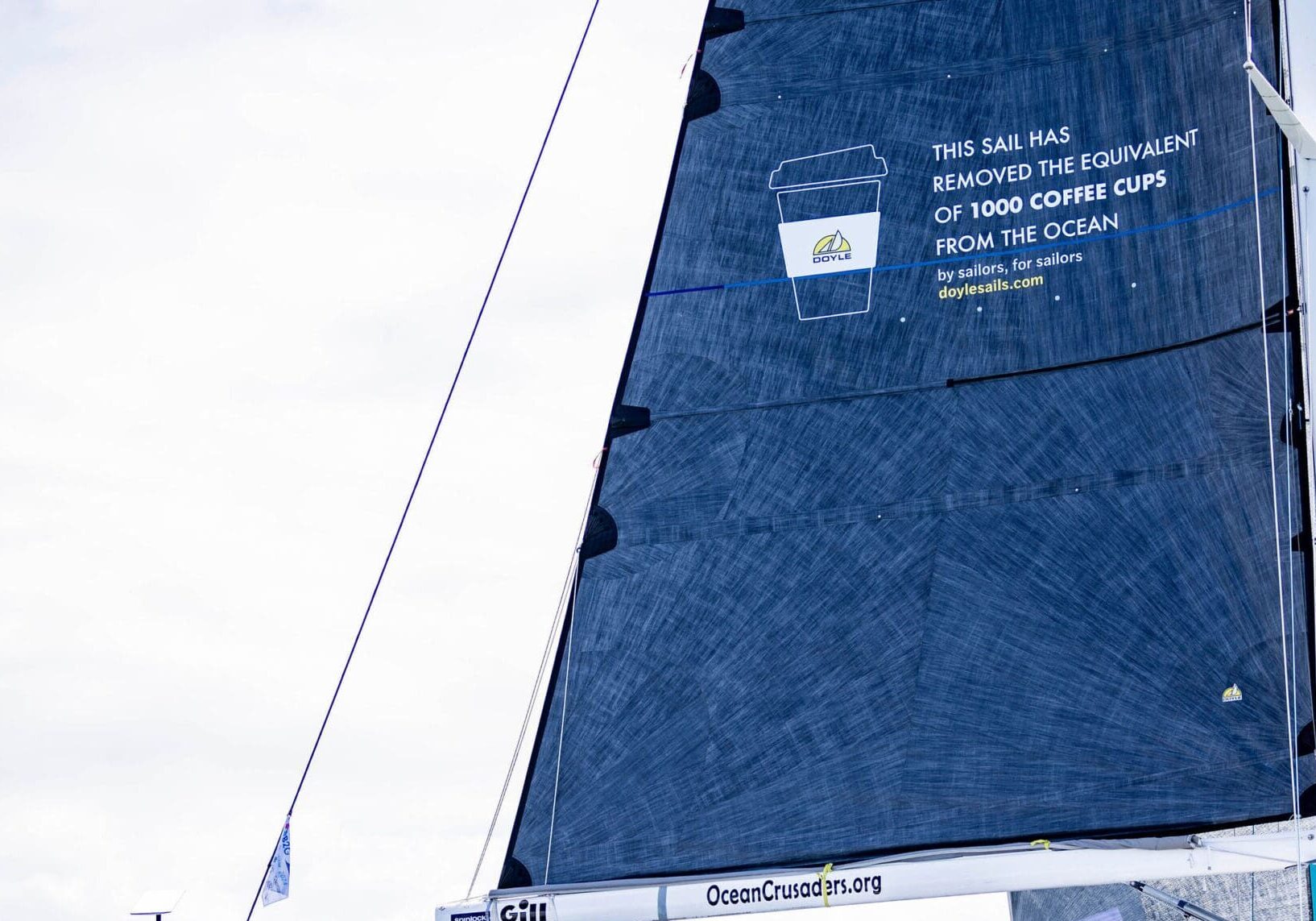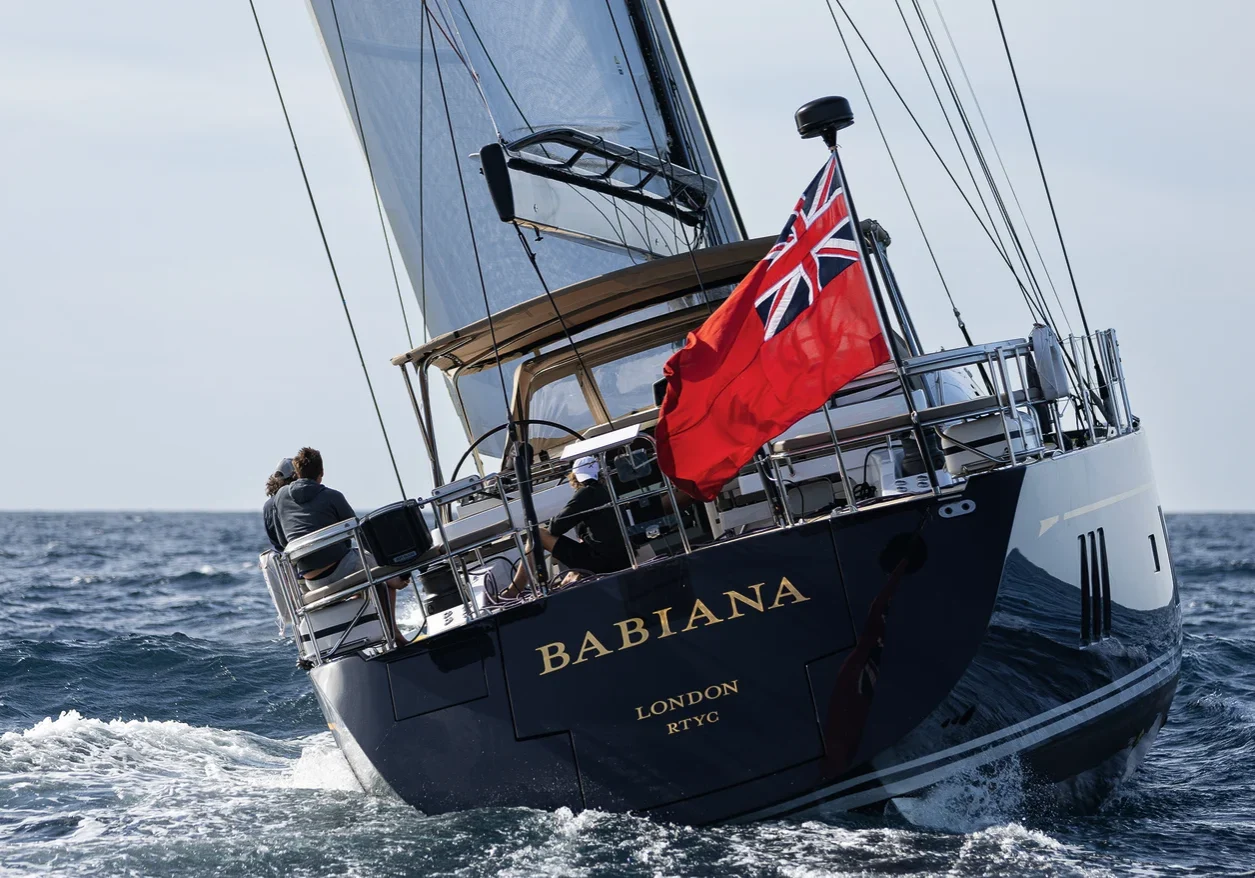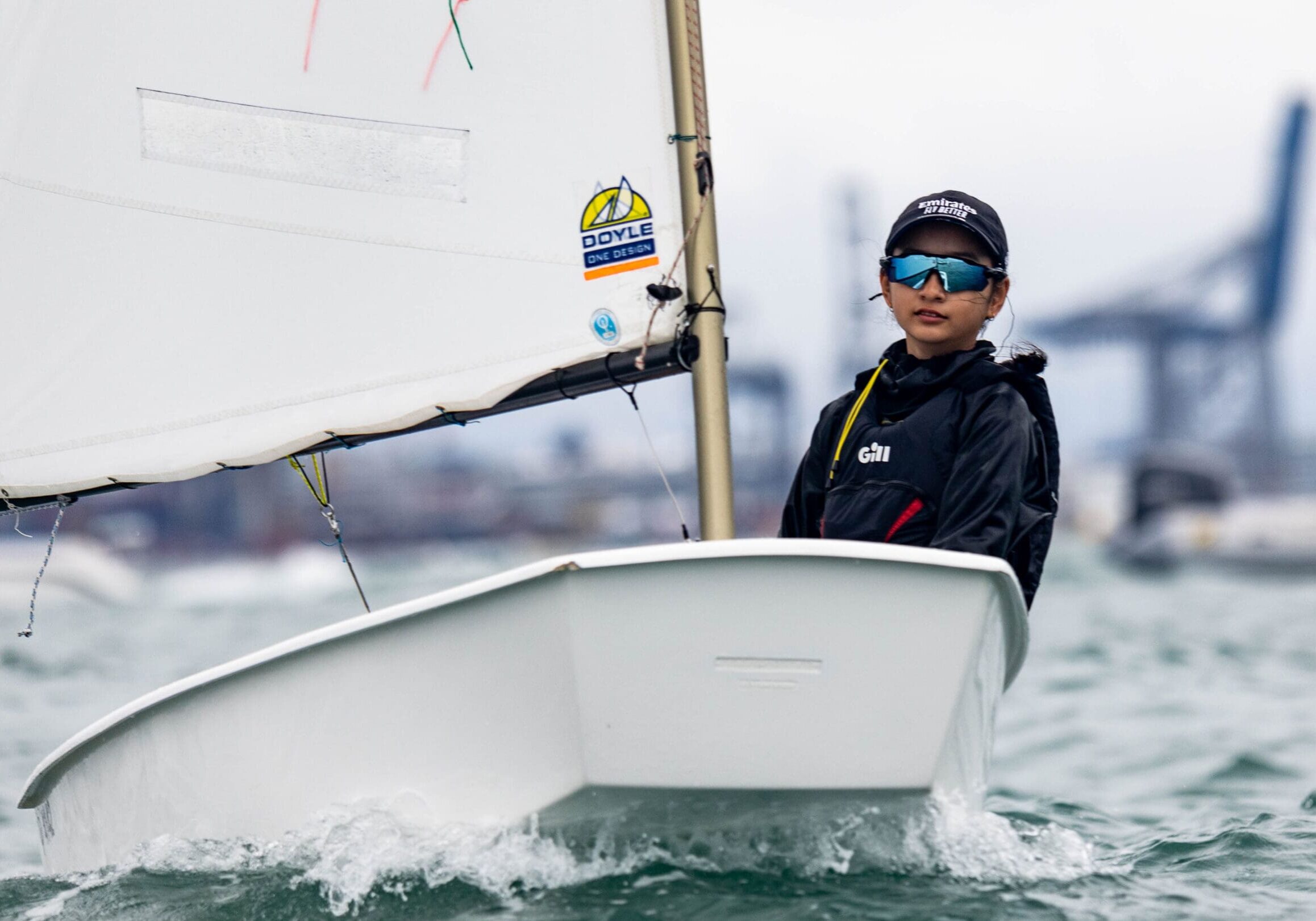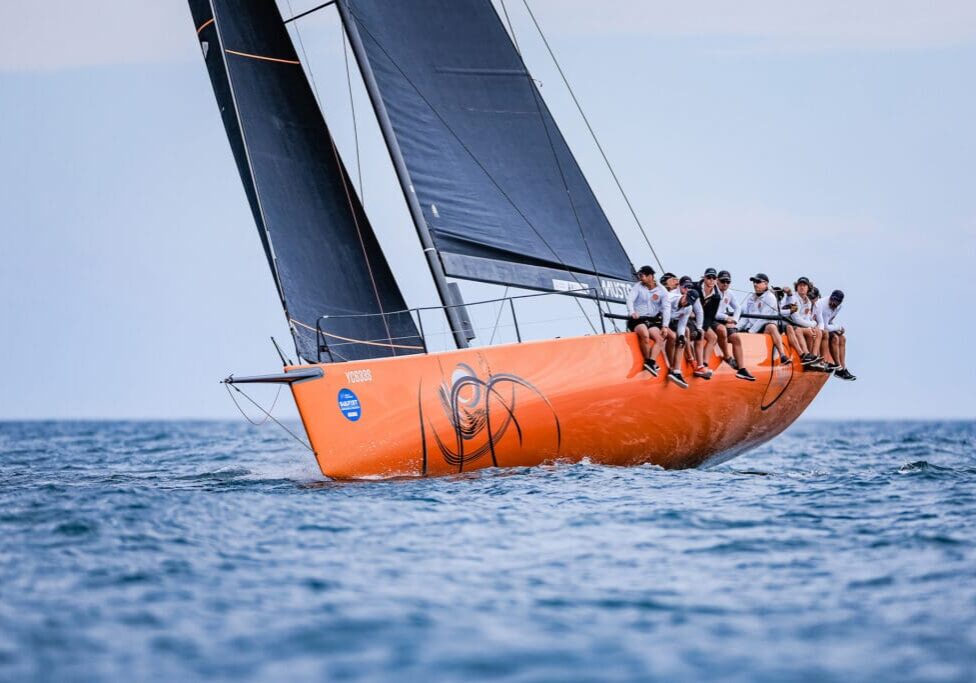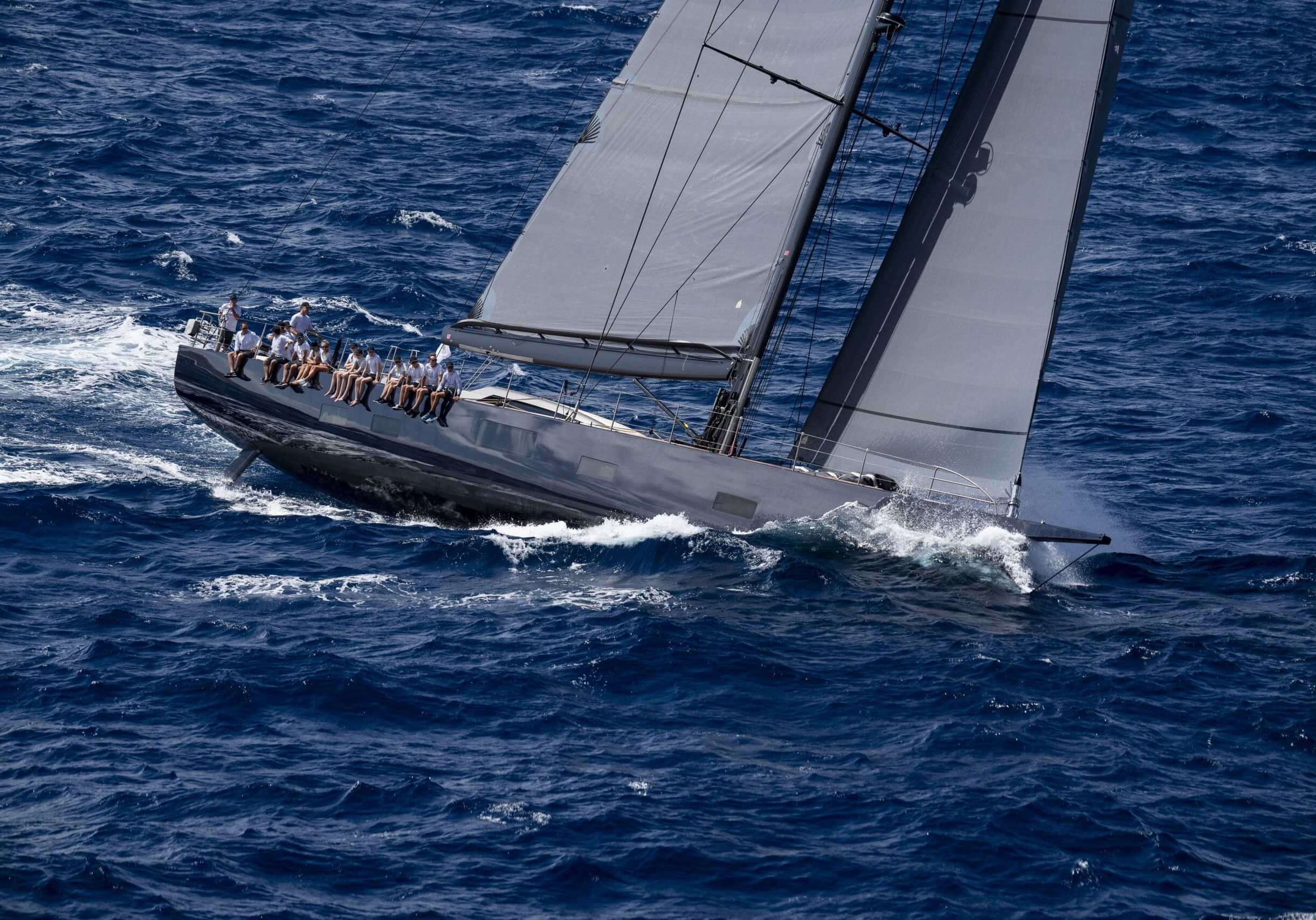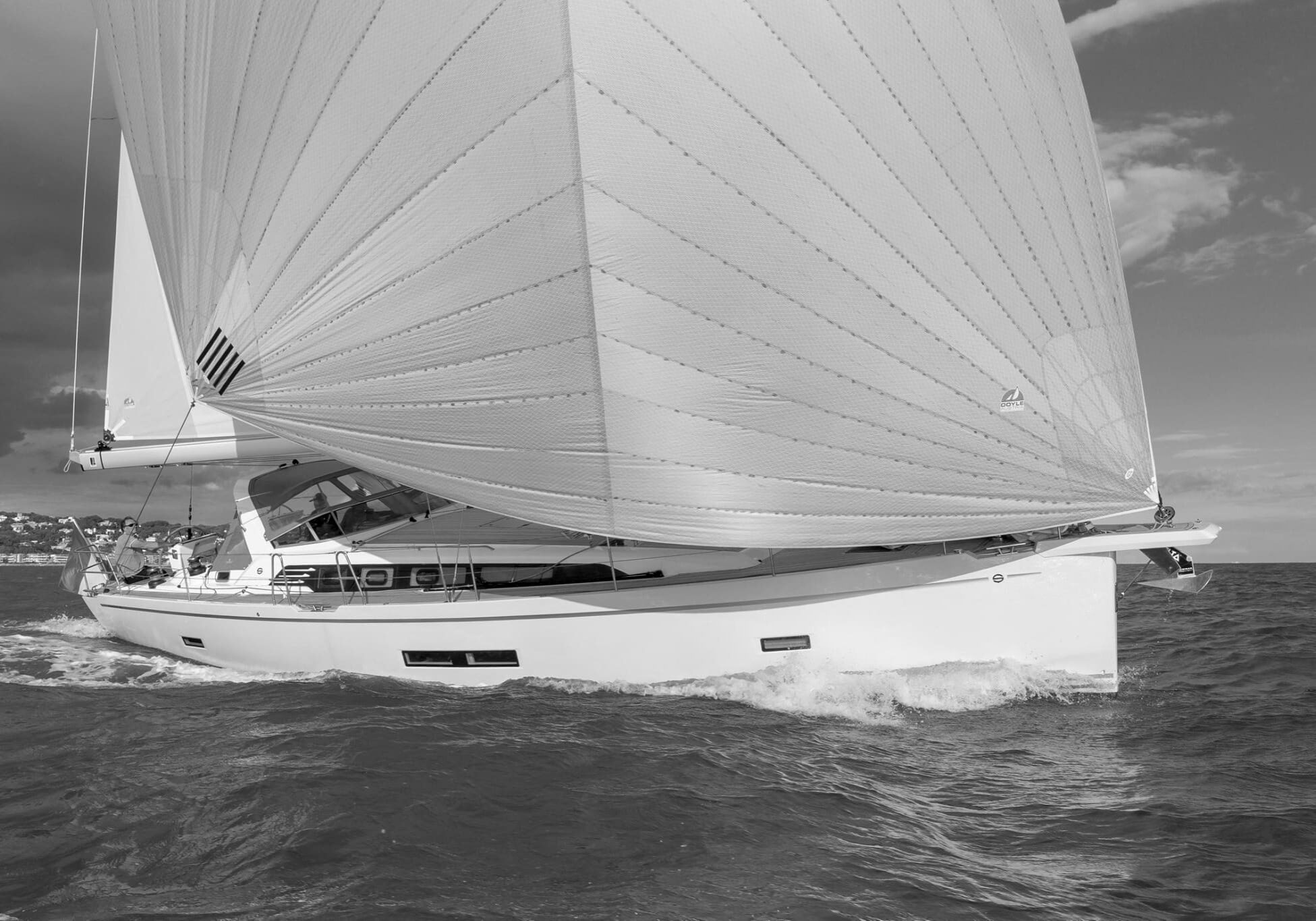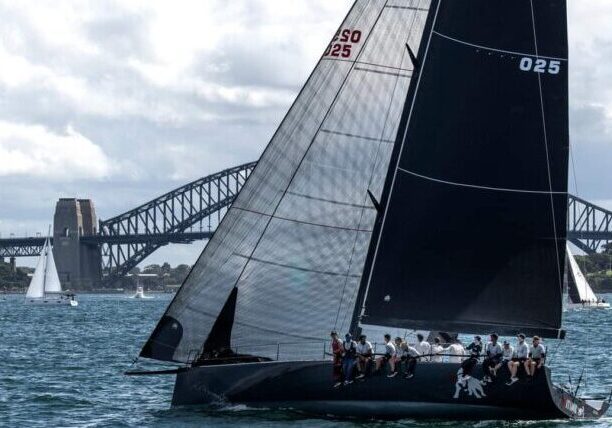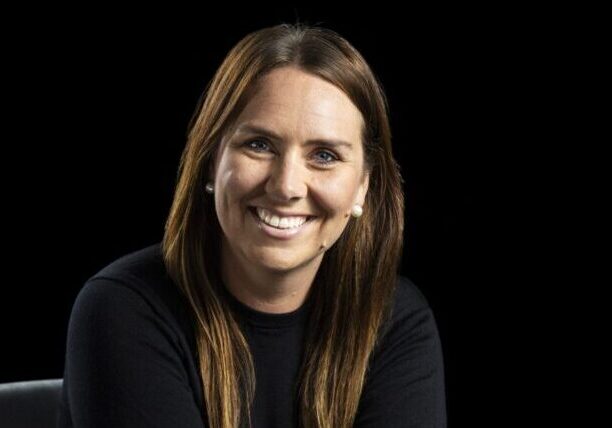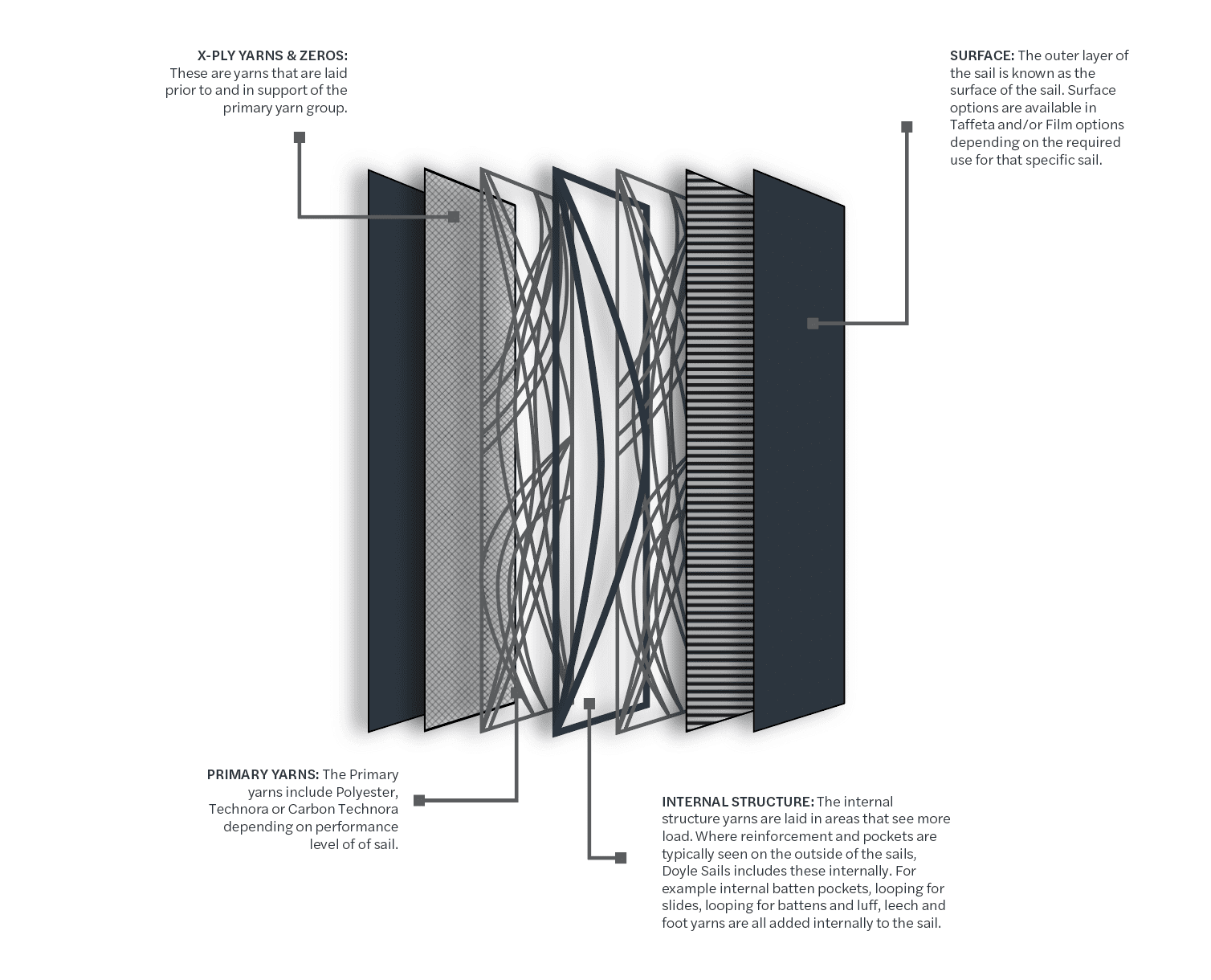
THE STRATIS PROCESS
When designing Stratis sails, the first part of the process is to select the surface type.
Once the surface is laid on the Stratis table, X-Ply yarns are laid to give the sail a base layer of fibre as support before the primary yarns are laid on top. Primary yarns include Stratis 500 in Polyester, Stratis 800 in Technora or Stratis 1100 in Carbon Technora.
Once the primary yarn structure is laid into the sail custom yarn layouts are laid to match internal detailing including internal batten pockets, looping for slides, looping for battens on the leech. Then the whole process begins again in reverse, with the remaining primary yarn layout being laid before a balance of support yarns, followed by the surface.
Once the sail has all of the fibres laid, the sail goes through a lamination process where it is heat sealed under 16 tonnes of pressure before being finished by the hands of our world class sailmakers.
100% CUSTOM MADE IN NEW ZEALAND
The outside surface is chosen with the client, as Doyle has a huge selection of weights, colours and surfaces dependent on the type of sail and type of sailing the sail will be used for.
The key components when developing Stratis has been two-fold, firstly the quality of the lamination had to be unsurpassable. Doyle’s reputation has been built on its earliest catch phrase, “Better Engineered Sails” so Stratis needed to stand by that. Secondly, each sail is 100% designed and engineered for the customer's yacht and application. Every time the Stratis machine runs a path of fibres it’s entirely custom made to that sail.
We are continually developing our laminated sail products in terms of design, materials and manufacture. Our research department continues to experiment with new surfaces, fibres, adhesives and techniques with the aim of offering our clients the best possible product while our design department uses the latest computer technology and design tools to develop shapes and structures for faster and more innovative sails.
